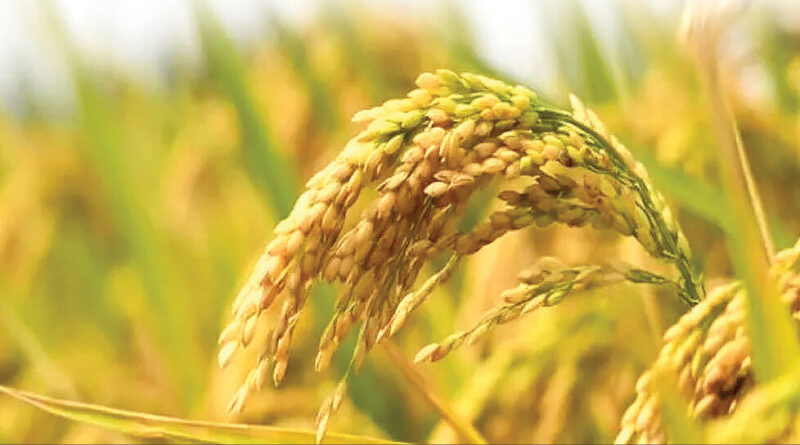Kerala’s paddy farmers grapple with historic drought
By Rajesh Abraham
Titto Varghese, a pokkali rice farmer at Njarakkal in Ernakulam, wears a concerned expression as he gazes upon his nearly parched paddy field. Weeds have proliferated and flourished, devastating the rice seedlings in most of his plots. “Since we planted in June, rainfall here has been scarce. Our entire paddy cultivation for this season has been decimated,”he laments.
Johnson Oliyapuram, cultivating traditional rice varieties such as Thondi, Mullankaima, Gandhakasala, and Valichoori in Thrissilery, Wayanad, attests to the longest dry spell he’s seen in over 15 years. “Streams near the fields have dried up. To sustain my fields, I’ve been drawing water from nearby ponds’. Yet, it’s evident that the pond’s water levels are diminishing. There’s no replenishment. Ponds and wells will soon dry up if this persists,” Johnson reveals. His Thrissilery Kakkavayal Padasekhara Samithi oversees farms covering around 180–200 acres in the village. “We’re bracing for a significant problem this year,” he grimly acknowledges.
Amidst Kerala’s historic drought—current monsoon season rainfall is 48% below average, and August’s precipitation is 80–90% below normal—experts forecast a minimum 25% drop in paddy production. Rice emerges as the most vulnerable crop due to climate change.
“Throughout my journey from Wayanad to Thiruvananthapuram for Onam, I noticed parched or near-dry paddy fields. In hilly regions, even planted tubers have withered,” reports Rajesh Krishnan, CEO of Thirunelli Agro Producer Company, which supports 85 paddy farmers in Wayanad across 200 acres. According to him, June’s rainfall was less than 25% of the previous year’s June. “Imagine the gravity of this year’s situation,” he adds.
In 2021–22, Kerala’s cultivation area and rice production were 1.95 lakh hectares and 5.62 lakh metric tonnes, down from the previous year’s 2.05 lakh hectares and 6.26 lakh metric tonnes, as per the Department of Economics & Statistics. This equates to a 9,300-hectare cultivation reduction and around 65,000 metric tonnes dip in rice production.
The most popular rice in Kerala is ‘Uma’, which is a medium-duration variety. “As far as the medium-duration variety is concerned, the first 55–90 days from planting to flowering are crucial,” says B Smitha, deputy director of the agriculture department in Alappuzha. “Any stress during this period will affect productivity negatively,” she says. The duration of paddy cultivation has come down over the years. It’s now extremely difficult to plan the paddy cultivation due to the vagaries of the weather,” explains Smitha.
Rajesh says there will be a significant fall in yields this year if the rains stay away for one more month. “Even those using chemical fertilisers cannot use them if there’s no water in the fields. Organic farmers may fare better because they don’t need that much moisture content in the soil. Also, since they have been doing organic cultivation, there will be more moisture on their paddy fields,” he says. “But no one will be able to endure if the severity of the dry spell continues for one more month,” he says.
Farmers said they are trying to irrigate their paddy fields once every fortnight to ensure that their efforts this season do not go to waste completely. Also, heavy, continuous rains from now on will hamper the harvest detrimentally. A long-term solution to changing weather conditions would be to promote short-duration varieties of rice and develop rice with stress-tolerant genes. “Farmers should be provided with more choices of paddy seeds that are short-duration and stress-tolerant, “Smitha added.
This article has been republished from The New Indian Express

